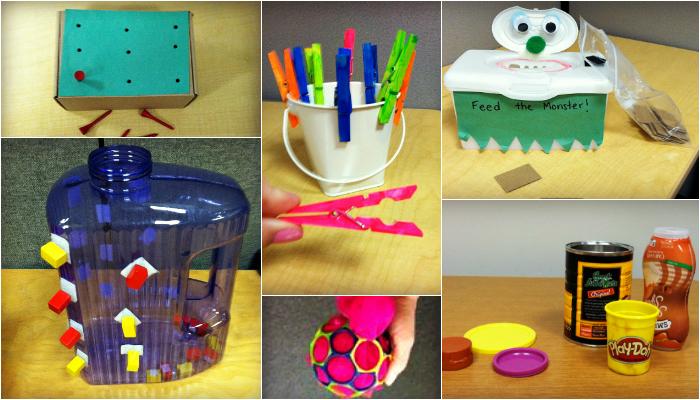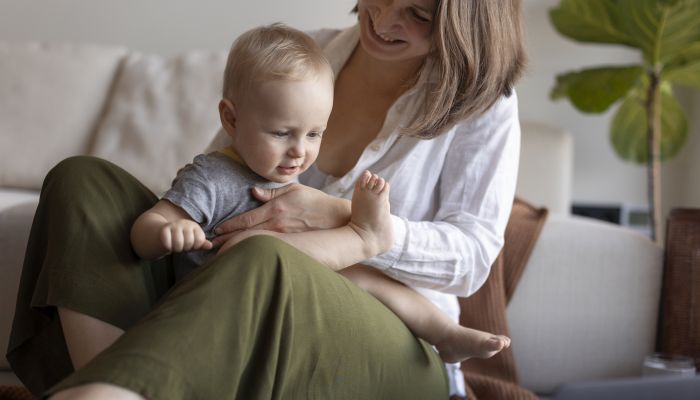6 DIY Toys to Encourage Fine Motor Development

This post may contain affiliate links; please see our terms of use for details.
What’s one of the best things about having your kid attend a specialized school like Perkins School for the Blind? Well, of course it’s the top notch eduction and services, but let’s not forget how beneficial it can be for a parent to have access to so many smart and dedicated therapists and service providers all on one campus!
I had the opportunity to meet with Sarah Bis, an occupational therapist (OT) who works in the deafblind program at Perkins, and I asked her about some of the home-made toys she creates for her students to help them learn fine motor skills. Below are six of my favorites!
#1. Shoebox Pegboard
Poke holes in the top of a cardboard shoebox to create your very own pegboard. You can use golf tees for the pegs (available in an assortment of colors) and add a colorful piece of cardstock to the top of the board for some added color contrast.

#2. Lid Matching
This activity couldn’t be any easier! Just grab three containers with lids and have your child help in finding which lids go with which containers. Try to find containers that are very different in size and maybe even made out of different materials. It’s also fun to choose lids that attach in different ways. For example, do you pop the lid on or do you have to screw it on? You can also discuss colors during this activity. Do the lids match the colors of their containers? And if not, do you think they should?

#3. Clothespin Activities
Clothespins are a great fine motor tool. You can find clothespins in a variety of colors and made in different materials, too. An easy way to begin clothespin play is to simply place some pins on the edge of a small bucket and ask your child to take them off and place the pins in the bucket. You can add complexity by having your child match clothespins to colors (like pinning to a painted paper plate) or to texture. There are so many possibilities!

#4. Velcro Bottle
I love this idea! Just get some velcro stickers and stick them to the back of small blocks and to the surface of a large plastic bottle. Suddenly a bottle is turned into a fine motor game! Help your child locate the blocks and place them inside the bottle. You can really feel a sense of accomplishment when you find all the blocks… plus they make a great sound when they land in the bottle!

#5. Feed the Monster
What do you do with an old wipes container? Turn it into a monster, of course! Decorate the outside of your wipes container to look like a monster complete with teeth and googly eyes and then cut out a bunch of “food” from cardboard that your child can feed to the monster. You can also cut out different shapes and ask your child to feed only the circles or only the squares and turn this into a shape sorting game too!

#6. Scarf Pull Toy
What a simple idea! Just stuff a silky scarf into an Oball (we like the ones with rattles because they make noise) and see if your child can pull it out. Such a basic idea, but full of so much possibility!

Read this article in Arabic: حيوا-السيدة-العمياء

Related Posts

Braille and Literacy, Toys, Visual Impairment
24 Braille Toys for Kids Who are Blind
Everything from alphabet blocks to raised line coloring pages and activity books to puzzles to card and board games... and so much more! And it's all in braille ready for...

Fine and Gross Motor
5 Alternatives to Tummy Time for Babies with Motor Development Challenges
Does your baby struggle with tummy time due to motor development challenges? These alternatives to tummy time will offer the same benefits.

Fine and Gross Motor
Understanding Hypotonia & Hypertonia: What Parents Need to Know
Altered muscle tone can affect your child’s development. Learn more about ways you can help your child by understanding hypertonia and hypotonia.